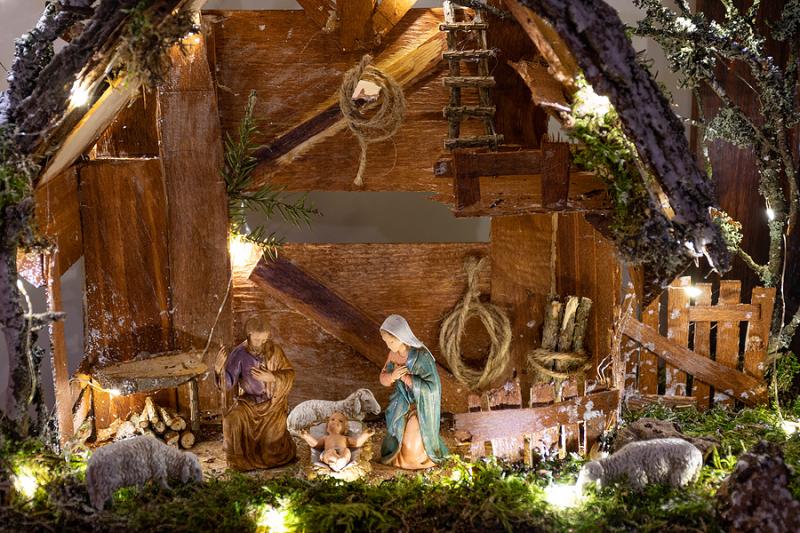Who Invented the Nativity Scene?
ITA:

Use player to listen to Italian version
The nativity scene, presepe or presepio in Italian, is a representation of the birth of Jesus, which originates from ancient and medieval traditions; the ritual of setting up the nativity scene at home during the Christmas period, originally Italian, is widespread today in all Catholic countries of the world.
The term presepe derives from the Latin praesaepe, meaning manger, but also a closed enclosure where sheep and goats were kept; the term is composed of prae (in front) and saepes (fence), that is, a place that has a fence in front of it.
It is believed that the inventor of the nativity scene is none other than Francis of Assisi, who first created it in 1223. According to his biographer, Francis, in 1222, traveled to Bethlehem and was profoundly impressed by the sacred representations on the birth of Jesus.
Back in Italy, he asked the then-Pope Honorius III to reproduce them the following Christmas.
The Pope did not grant him permission as, at the time, the representation of sacred subjects was forbidden, allowing him instead to celebrate mass in a natural cave in Greccio.
Torches were placed in the cave for illumination, as well as a crib/manger filled with straw, with a donkey and an ox beside it. It was not a complete nativity scene yet.
The first nativity scene with statuettes dates back to 1283 and was the work of Arnolfo di Cambio. The famous sculptor, known for providing the original design of Florence’s Cathedral, sculpted a nativity scene with eight marble statuettes representing the characters of the Nativity and the Magi; it can still be admired today in the Roman Basilica of Santa Maria Maggiore.
Il presepe è una rappresentazione della nascita di Gesù, che ha origine da tradizioni antiche e medievali; il rito dell'allestimento del presepe in casa durante il periodo natalizio, originariamente italiano, è oggi diffuso in tutti i paesi cattolici del mondo.
Il termine presepe deriva dal latino praesaepe, che significa mangiatoia, ma anche recinto chiuso dove venivano tenute pecore e capre; il termine è composto da prae (davanti) e saepes (recinto), cioè un luogo che ha un recinto di fronte.
Si ritiene che l'inventore del presepe non sia altri che Francesco d'Assisi, che lo creò in parte per primo nel 1223. Secondo il suo biografo, Francesco, nel 1222, si recò a Betlemme e rimase profondamente colpito dalle sacre rappresentazioni sulla nascita di Gesù.
Tornato in Italia, chiese all'allora papa Onorio III di riprodurle il Natale successivo.
Il Papa non gli concesse il permesso in quanto, all'epoca, era vietata la rappresentazione di soggetti sacri, consentendogli invece di celebrare la messa in una grotta naturale a Greccio.
Nella grotta furono poste delle torce per l'illuminazione, così come una culla / mangiatoia piena di paglia, con accanto un asino e un bue. Non era ancora un vero e proprio presepe.
Il primo presepe con statuette risale al 1283 ed è opera di Arnolfo di Cambio. Il famoso scultore, noto per aver fornito il progetto originale del Duomo di Firenze, scolpì un presepe con otto statuette in marmo che rappresentavano i personaggi della Natività e dei Magi; lo si può ammirare ancora oggi nella Basilica romana di Santa Maria Maggiore.











